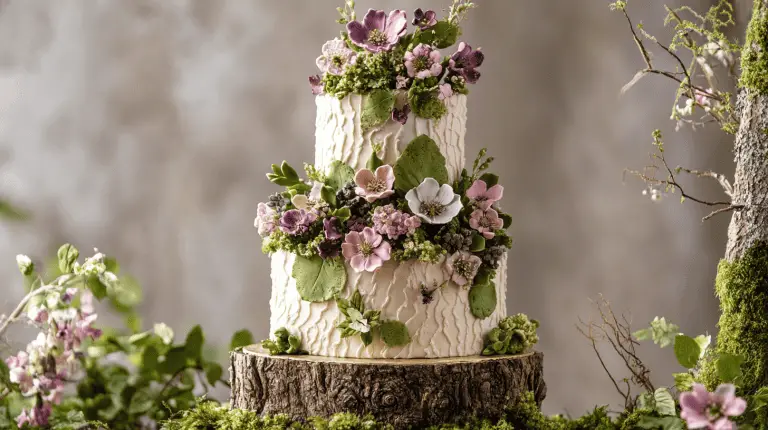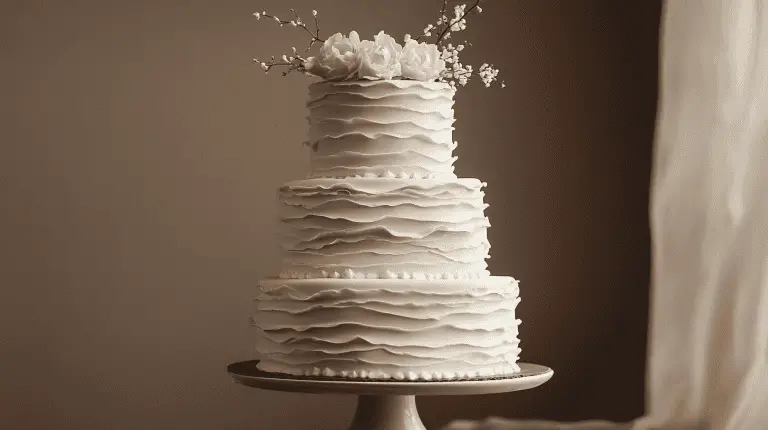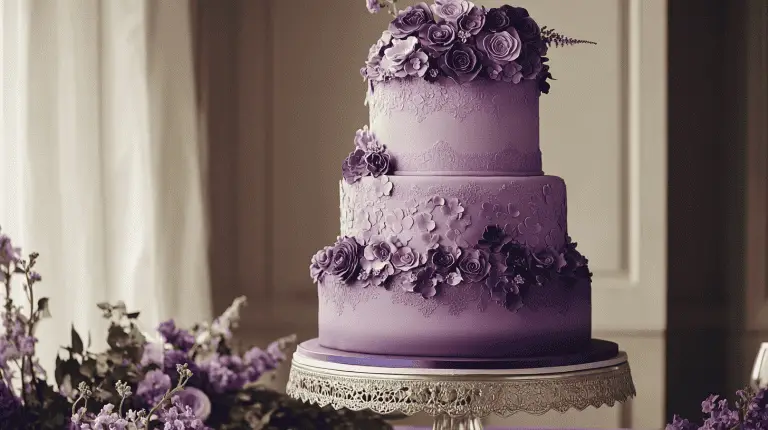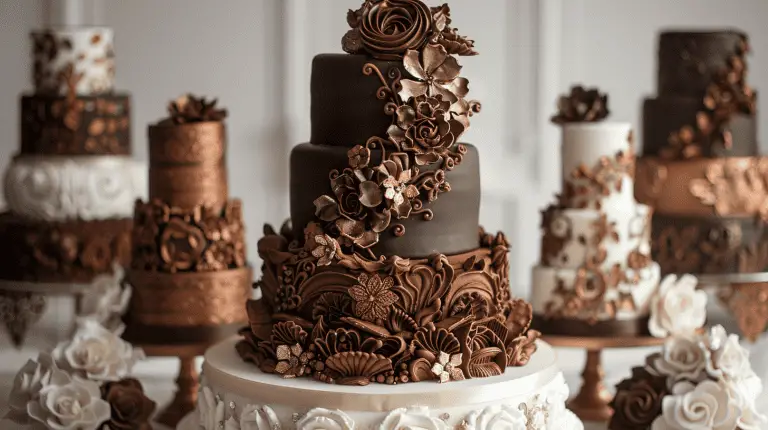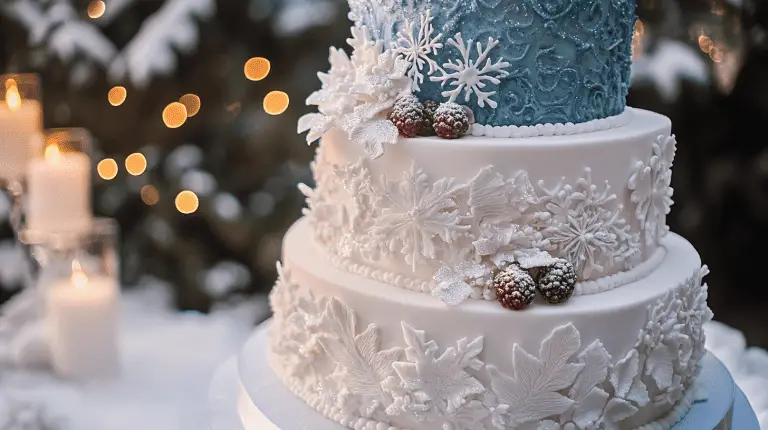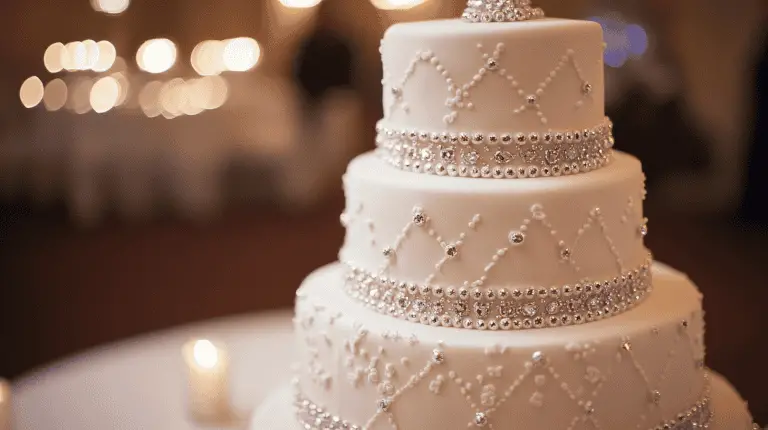Royal Wedding Cake Ideas: 37 Designs for a Regal Celebration
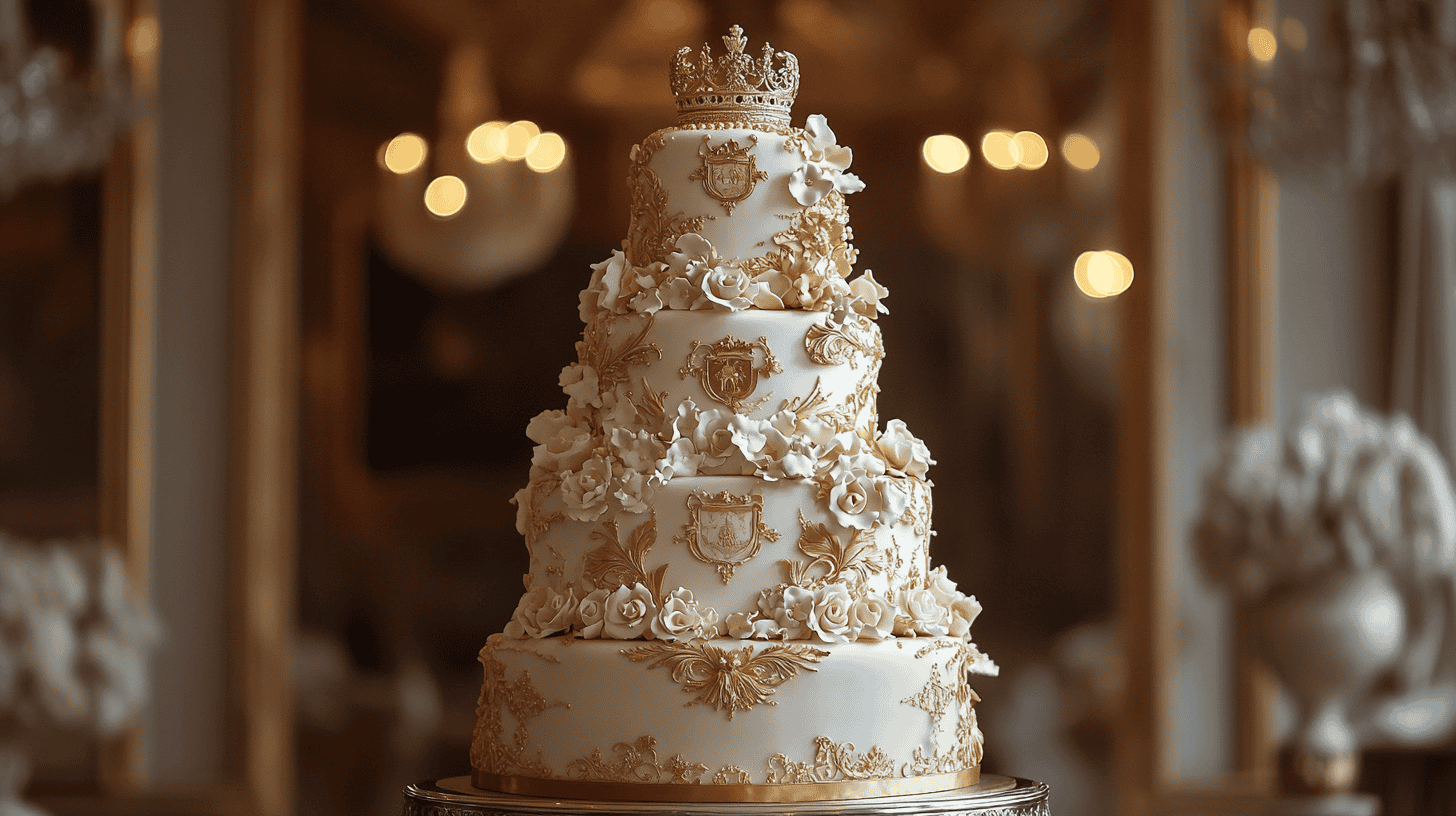
Introduction to Royal Wedding Cakes
Royal wedding cakes are true masterpieces of culinary art, showcasing grandeur and elegance that match the significance of the occasion. These cakes often incorporate intricate designs and towering heights, featuring multiple tiers and impressive decorations.
Throughout history, royal weddings have set trends and inspired bakers worldwide. Each cake tells its own story, reflecting the personalities of the couple and the era’s cultural influences.
One of the earliest royal wedding cakes belonged to Queen Victoria and Prince Albert’s wedding in 1840. It was a massive three-tiered creation, weighing an astonishing 300 pounds. Fruitcake, a traditional base for many of these cakes, is favored for its density and ability to hold elaborate decorations.
Consider Prince William and Catherine Middleton’s 2011 wedding cake, which featured eight tiers and 900 sugar-paste flowers. This cake exemplified the blend of traditional and modern elements.
Key aspects of royal wedding cakes often include the use of rich flavors, luxurious ingredients, and elaborate decorations like floral motifs and edible gold. These cakes are not just desserts but are symbols of continuity, tradition, and celebration at the heart of these momentous events.
The History of Royal Wedding Cakes

Royal wedding cakes have long been symbols of grandeur and opulence. They often feature intricate designs and towering structures that reflect the significance of the occasion.
In 1840, Queen Victoria and Prince Albert had a three-tiered wedding cake weighing around 300 pounds. This cake set a precedent for future royal weddings with its lavish decorations.
The 1947 wedding of Princess Elizabeth and the Duke of Edinburgh featured a remarkable cake that was nine feet tall. Dubbed the “10,000-mile cake,” it included ingredients from various parts of the British Empire, showcasing both the vastness of the Empire and the importance of the union.
Decades later, in 1981, Prince Charles and Lady Diana Spencer’s wedding cake gained iconic status. This cake, with its five tiers, was crafted by a prominent bakery and came to represent the romance and modernization of the royal family in that era.
In recent times, the wedding cake of Prince William and Kate Middleton in 2011 marked a return to traditional elegance. The six-tier cake featured ornate floral decorations and a refined color palette, captivating audiences with its sophisticated style.
The evolution of royal wedding cakes highlights the changing tastes and influences over the centuries. These cakes are not just culinary creations; they are cultural artifacts that encapsulate the era and the personalities of the royal couples they celebrate.
The Symbolism Behind Royal Wedding Cake Designs

Royal wedding cakes are steeped in meaningful symbolism, reflecting the grandeur and tradition of the occasion. These cakes often feature tiered layers, which not only add visual splendor but also signify the elevated status and hierarchy associated with royal events. Each additional tier represents layers of influence, with the highest symbolizing the peak of power and prestige.
Floral motifs are frequently adorned on these majestic cakes. These floral decorations are not merely decorative; they hold deep symbolic meanings. Flowers such as roses, lilies, and orange blossoms are popular choices. They symbolize love, prosperity, purity, and new beginnings, aligning perfectly with the union of marriage.
The choice of flavors for royal wedding cakes is also rich with tradition. Fruitcake is a traditional selection for many royal weddings. Its enduring nature and ability to remain preserved for years symbolize longevity and endurance in marriage. Often, slices of the cake are saved as mementos or shared with guests long after the wedding day.
Royal cakes are also known for intricate designs. Decorations using elements like shields or crests reflect the heritage and lineage of the families involved. These designs reinforce the importance of continuity and the merging of families, underscoring the unity that marriage brings.
Overall, every detail in a royal wedding cake is chosen to convey a deeper story, celebrating not just the event but the journey and history behind it.
1. 57 Royal Wedding Cake Themes & Ideas
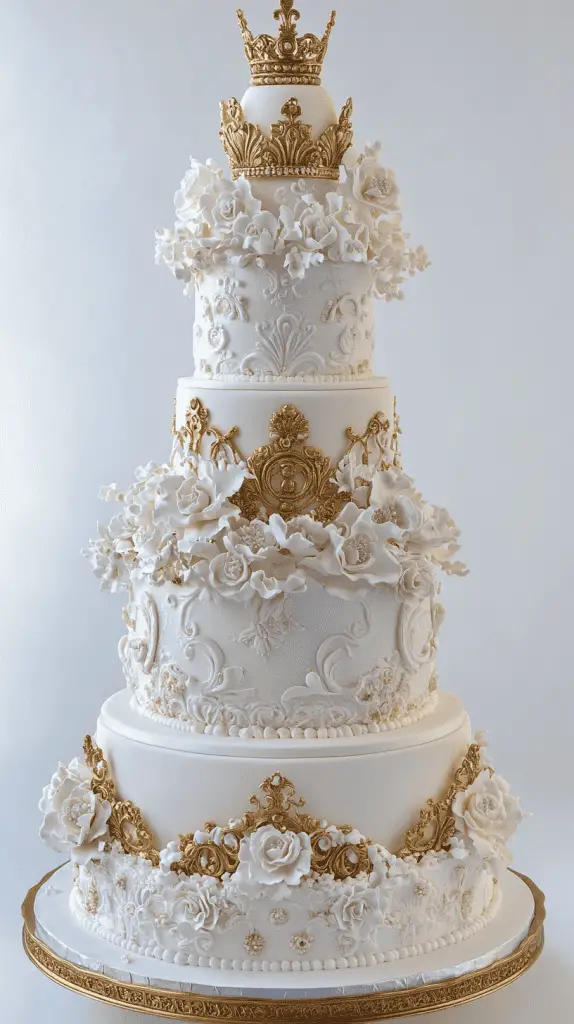
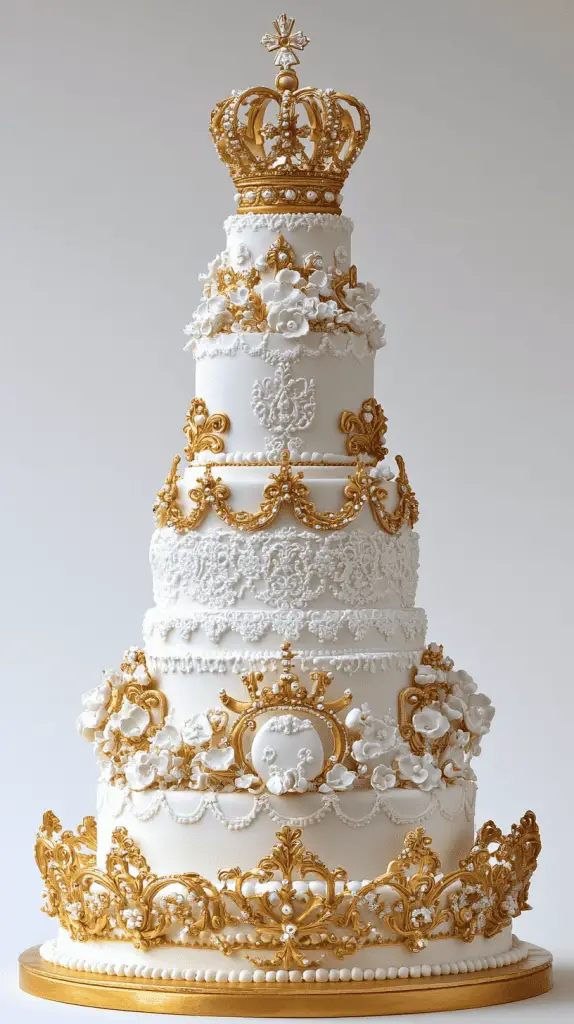
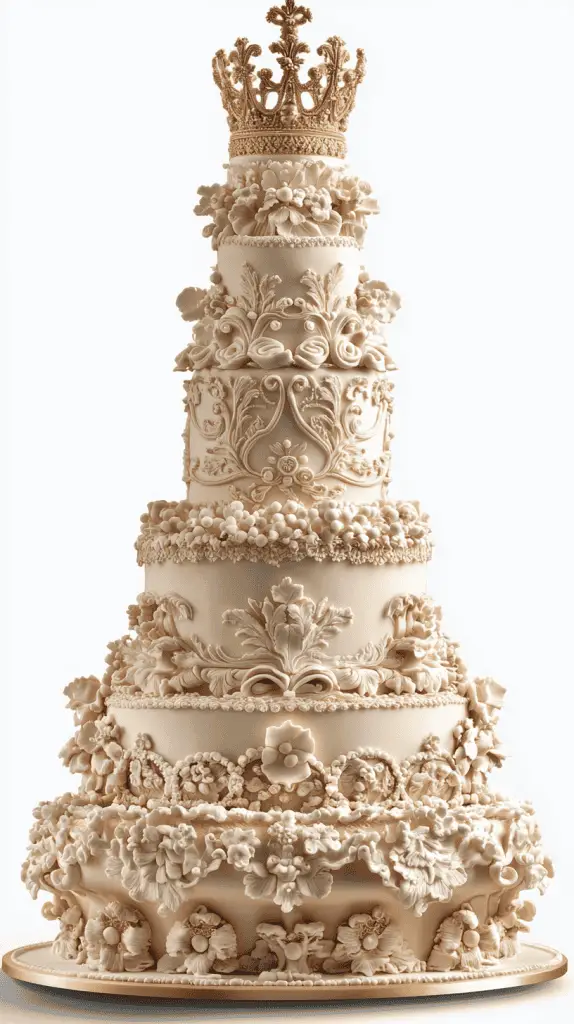
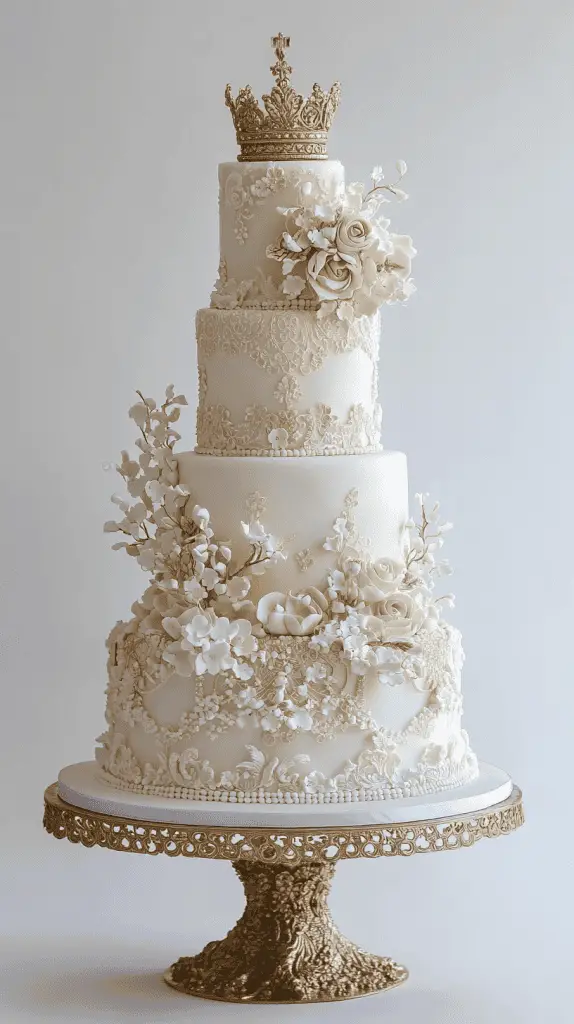
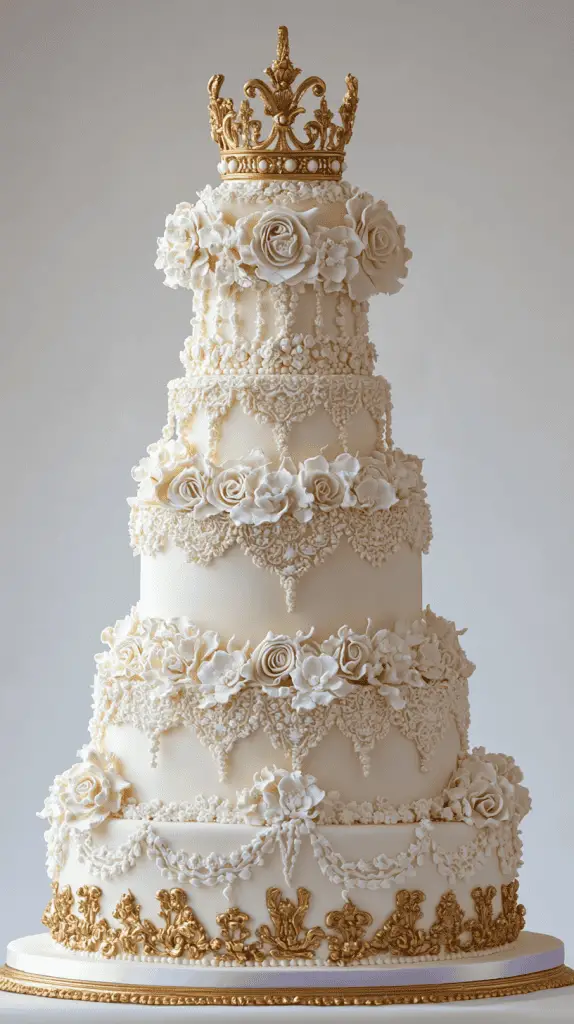
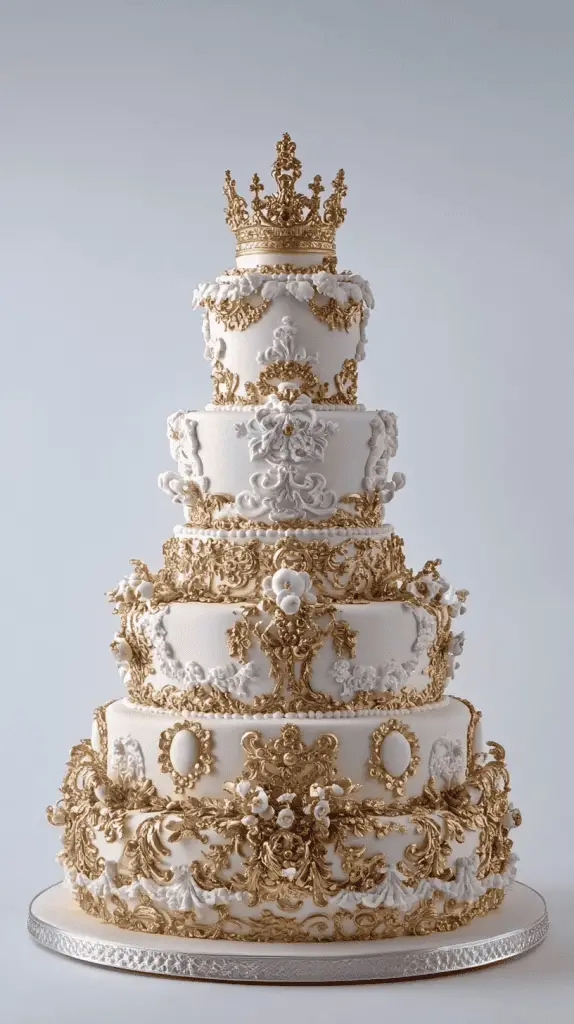
Royal wedding cakes are a perfect blend of tradition, elegance, and artistry. With themes ranging from classic designs to modern interpretations, these cakes captivate both the eyes and the palate.
2. Classic Royal-Inspired Cakes: Regal Tiers and White Fondant
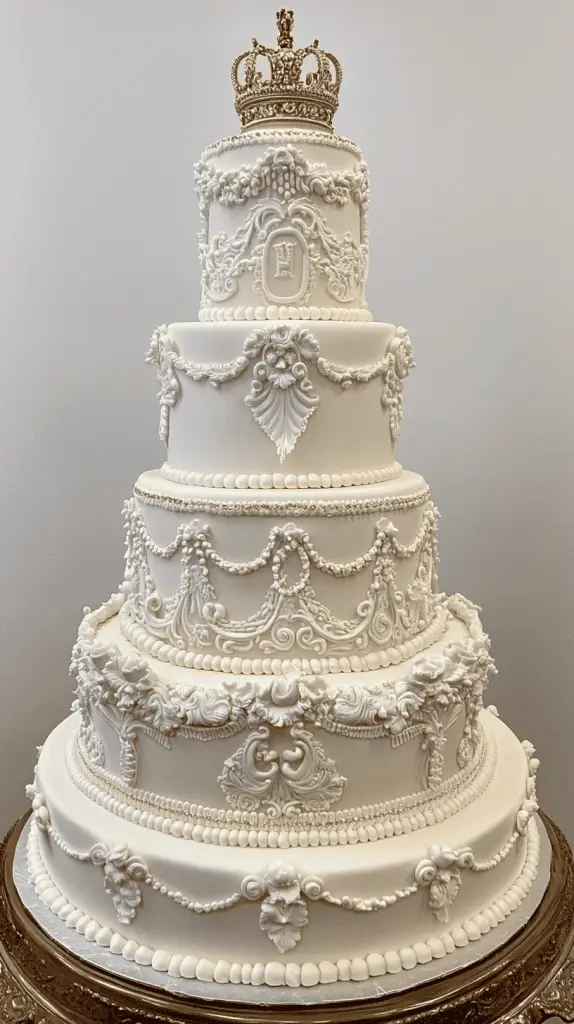
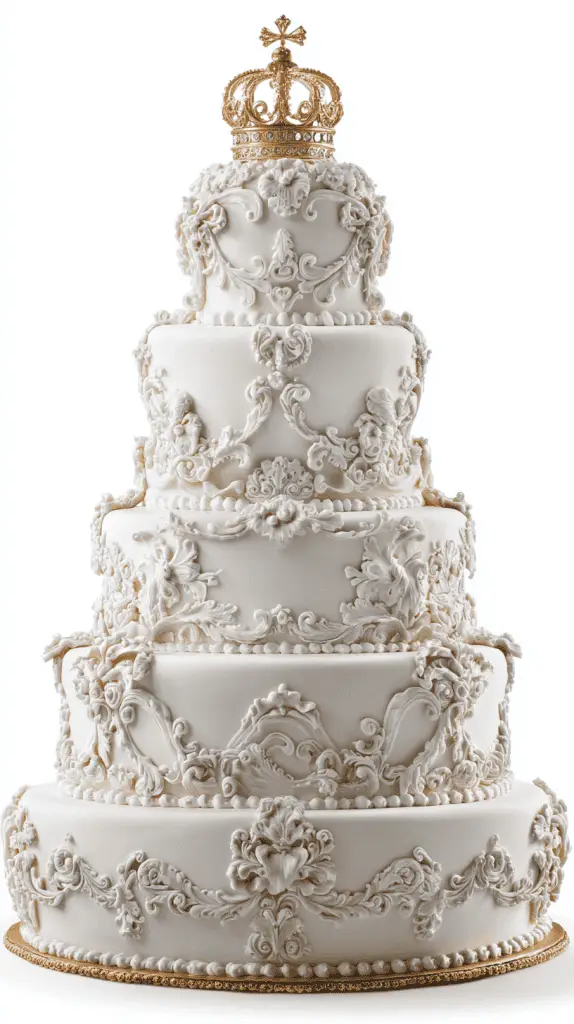
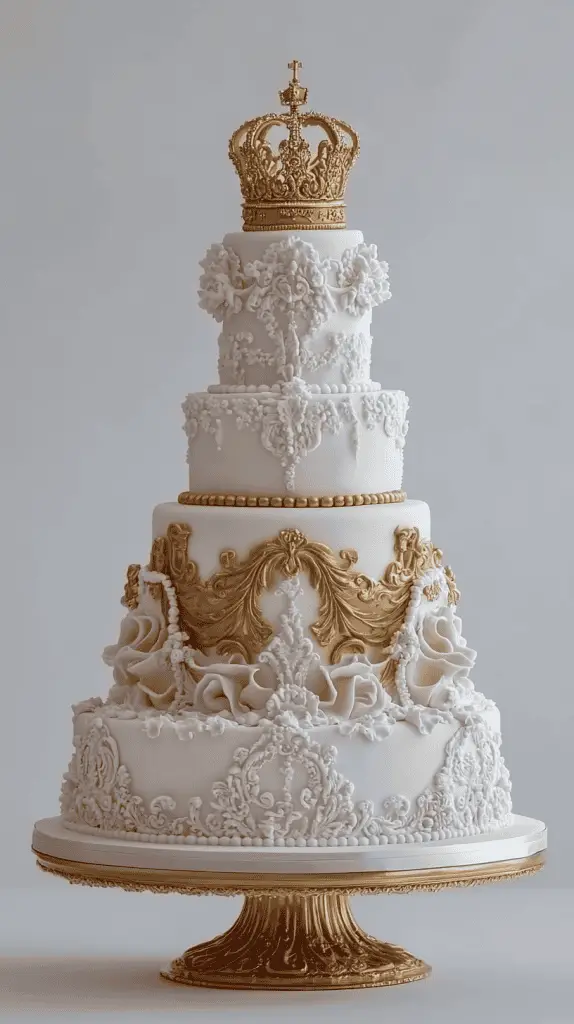
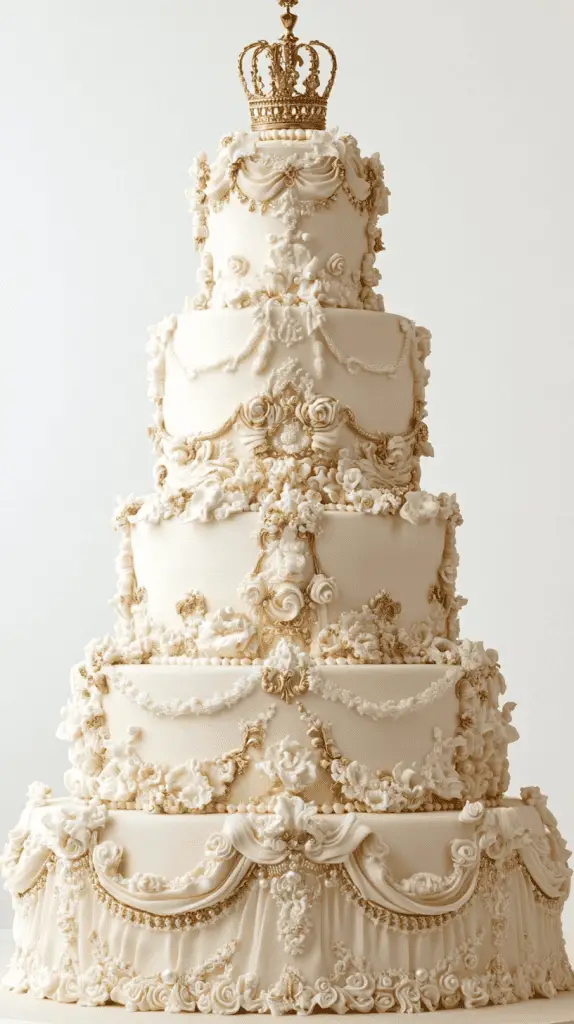
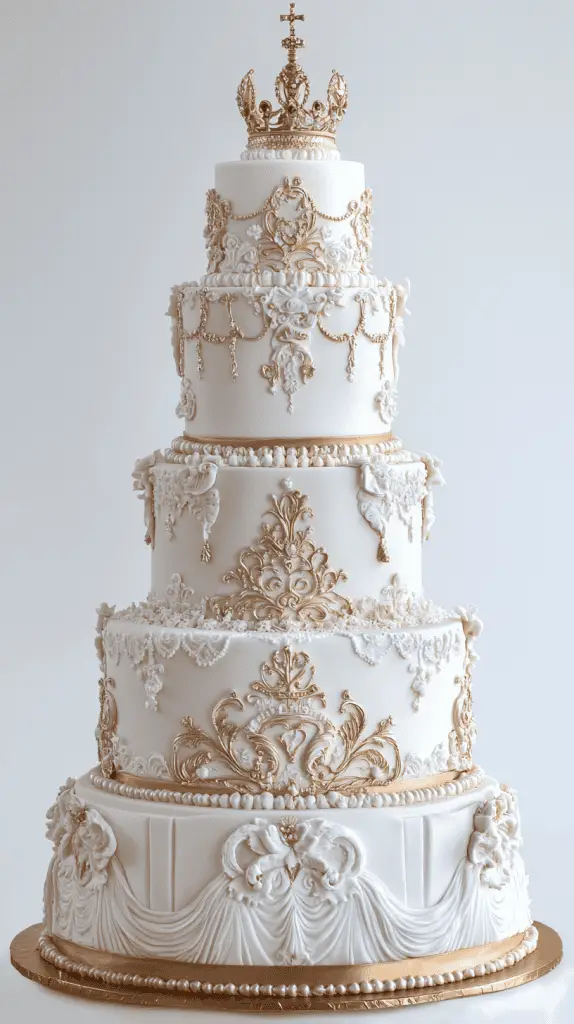
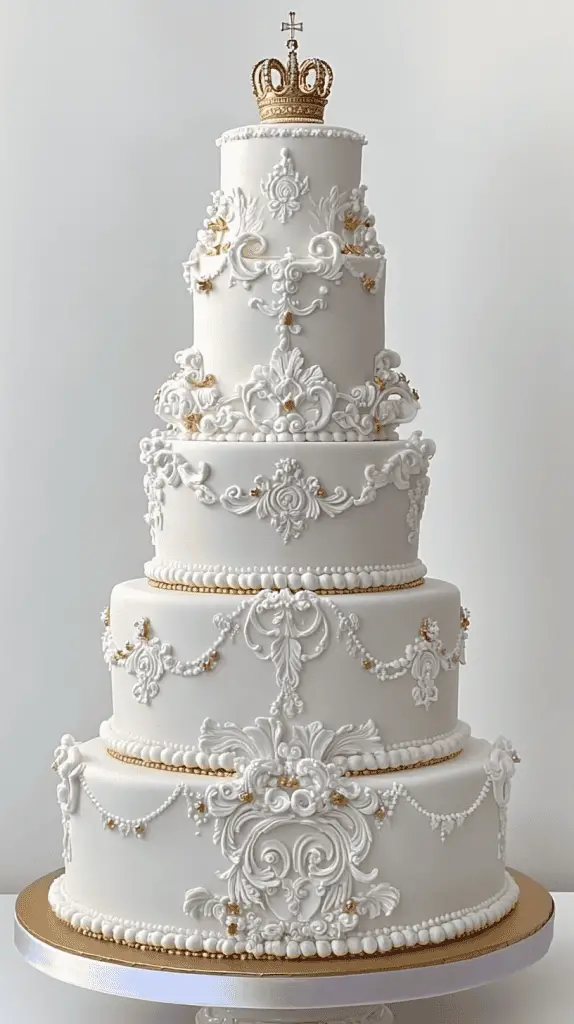
Classic royal wedding cakes often epitomize grace and tradition. They frequently feature multiple tiers, symbolizing grandeur and significance. White fondant is commonly used as a base, providing a sleek and timeless look. This design is reminiscent of past royal events that have set the standard for opulence.
White and gold or silver accents can enhance the majesty further. Intricate patterns and detailed piping work reflect the skill and artistry of the baker, creating an unforgettable centerpiece.
3. Floral Adornments: Roses, Peonies, and English Garden Themes
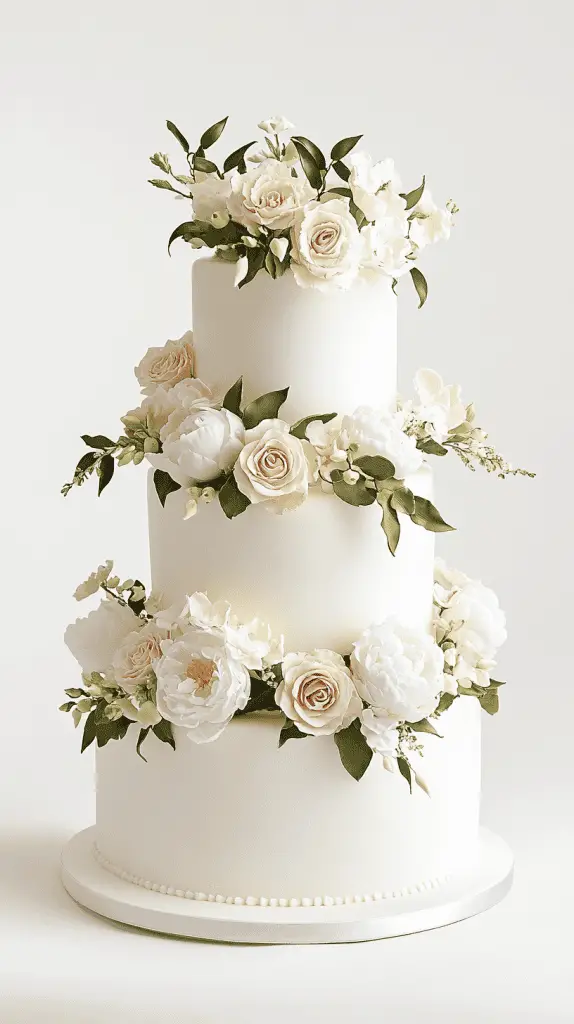
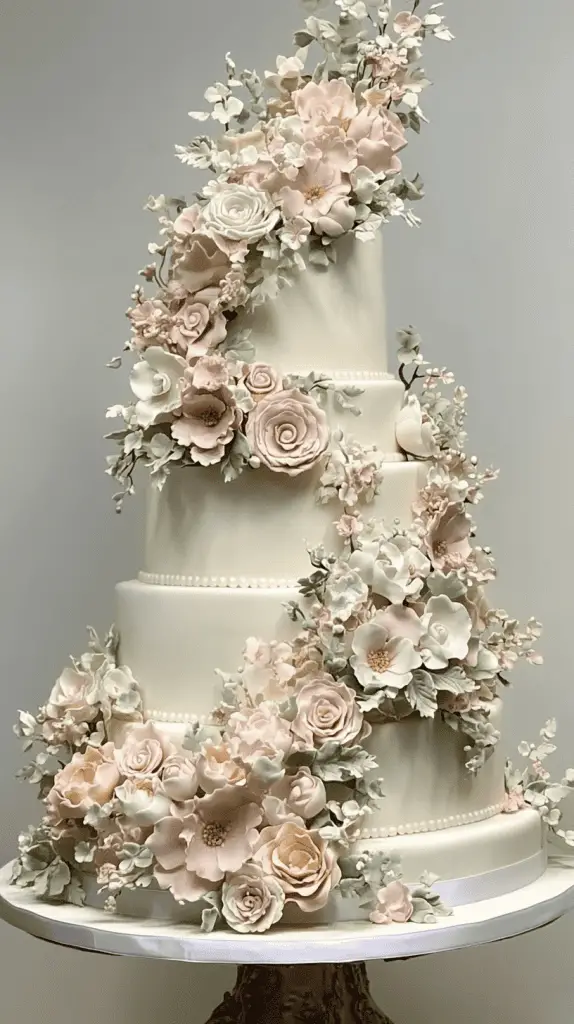
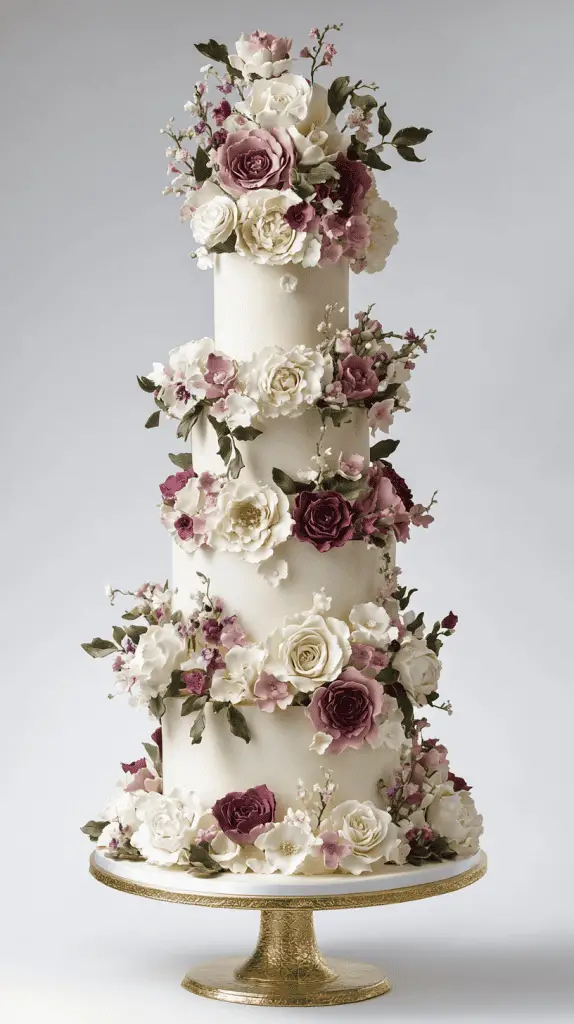
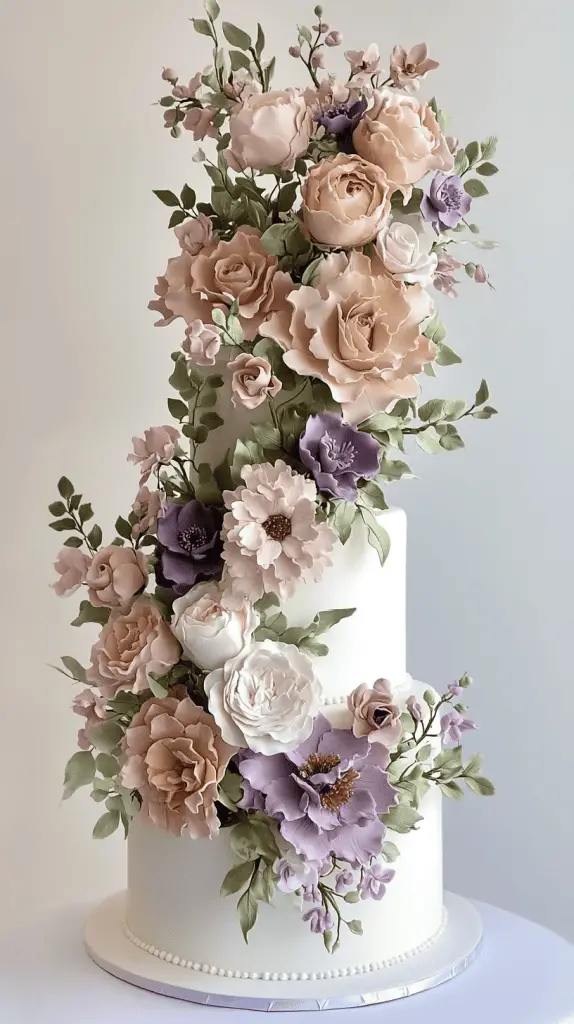
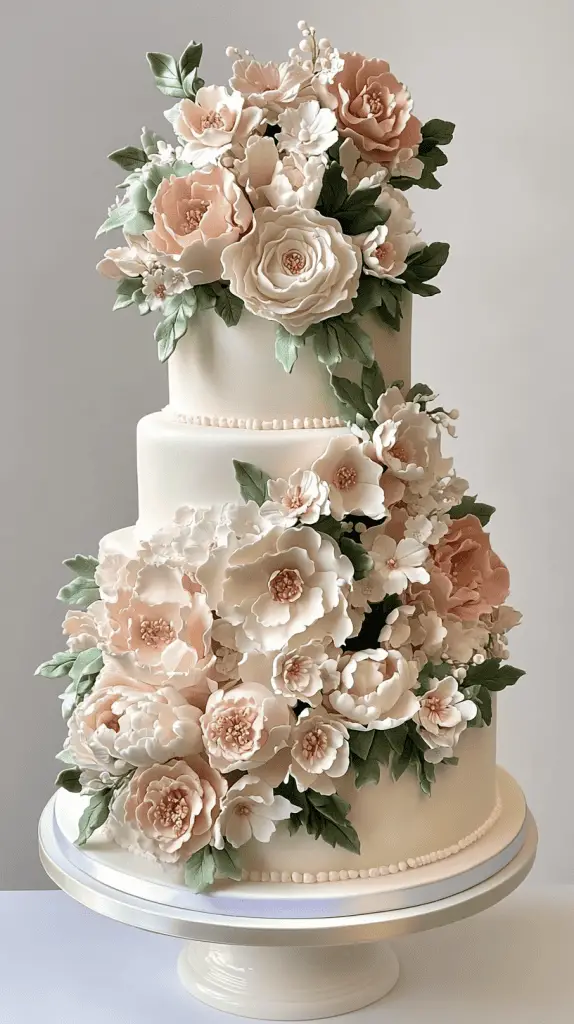
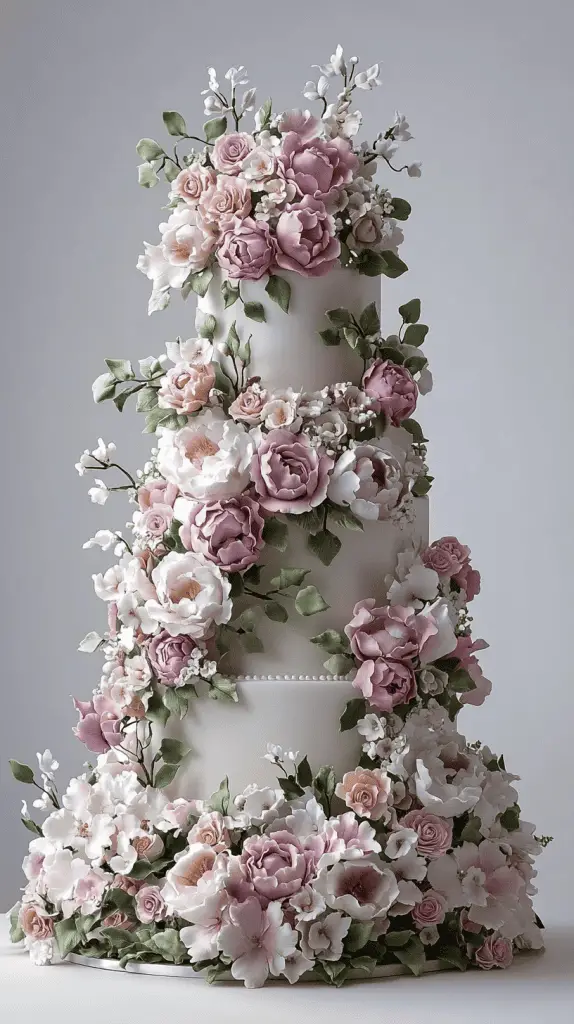
Floral themes bring a touch of elegance and natural beauty to wedding cakes. Roses, peonies, and other floral elements are popular choices. These flowers can be real or crafted from sugar, adding a delicate and personal touch.
English garden themes often inspire these creations, with lush greenery and pastel blossoms adorning the layers. Such designs evoke a sense of romanticism and timeless charm.
4. Gold Leaf Accents for a Luxurious Touch






Gold leaf adds a luxurious element to any royal wedding cake. It can be delicately applied to highlight specific areas or layered across tiers for a more lavish appearance. The gleam of gold against a white or pastel background creates a regal and opulent effect.
Gold accents can also be combined with floral or monogram designs to further enhance the cake’s extravagant style, making it fit for royalty.
5. Crown-Topped Cakes: Fit for Royalty






Crown toppers are a stately choice for royal wedding cakes. These decorative pieces serve as a nod to tradition and nobility. Crowns can be crafted from sugar or fondant, forming a sophisticated topper that brings the theme together.
They represent majesty and heritage, offering a visually stunning finish. Paired with regal colors or intricate patterns, crown-topped cakes capture the essence of royal splendor.
6. Royal Monograms and Personalized Emblems
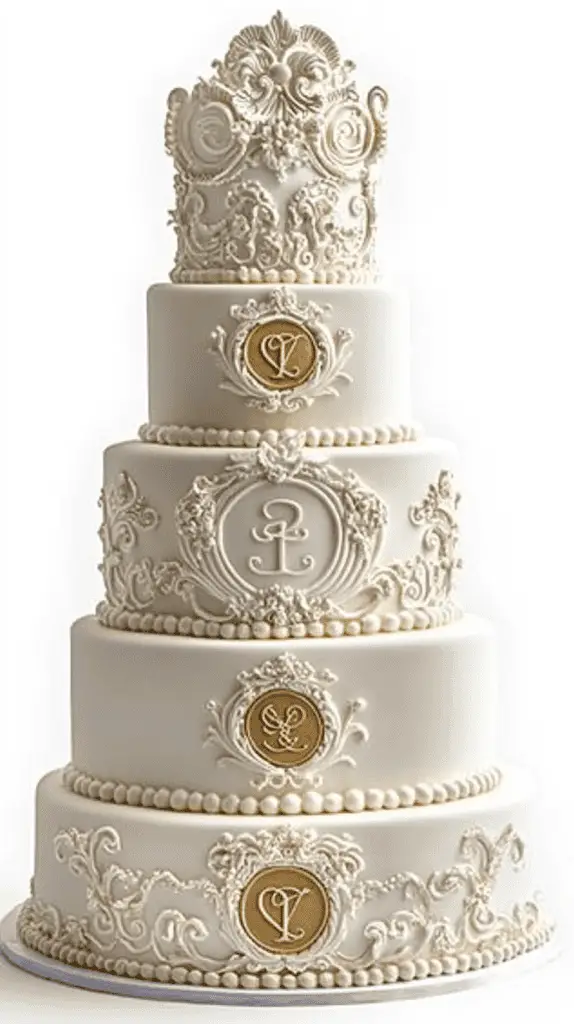
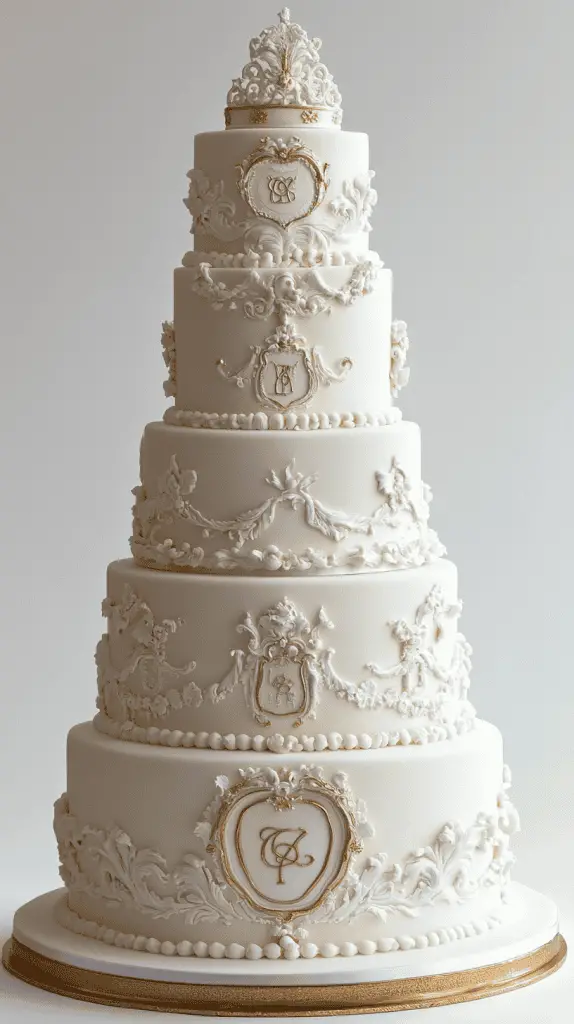
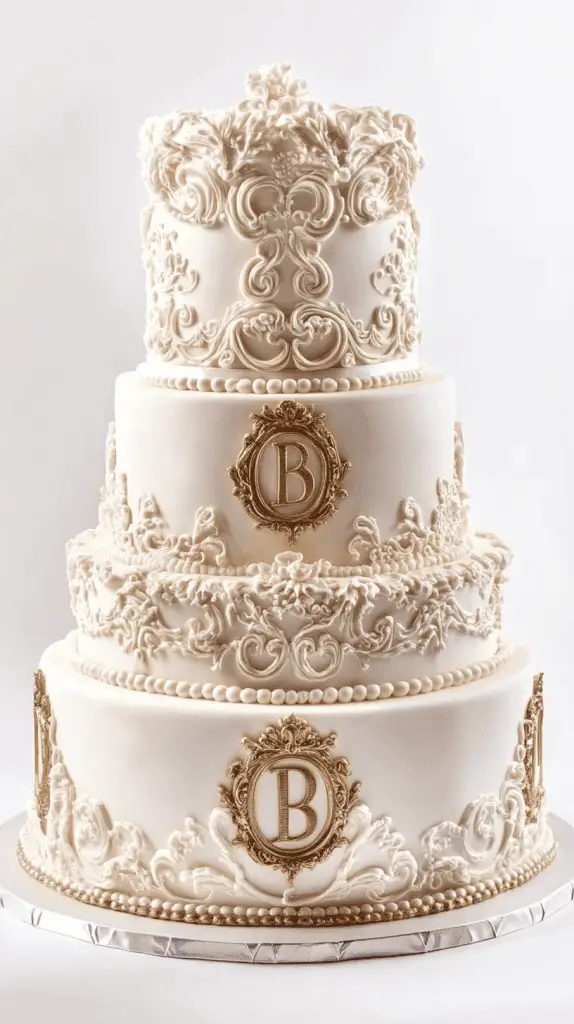
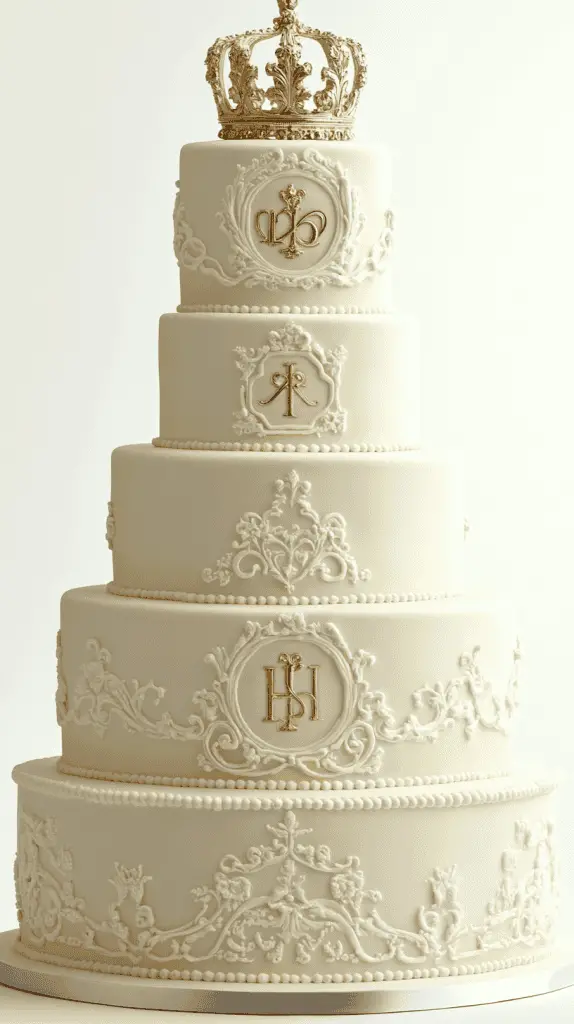
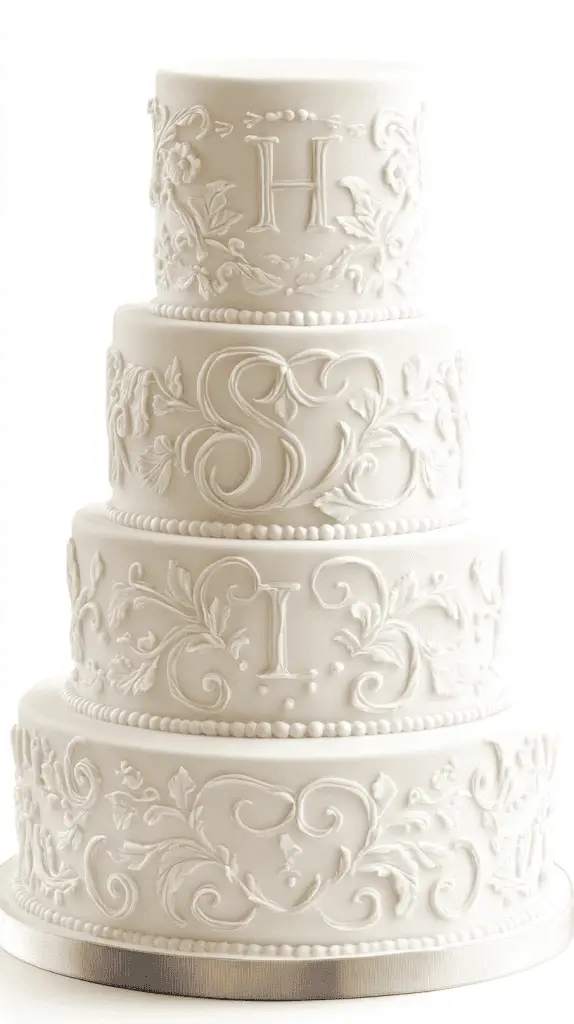
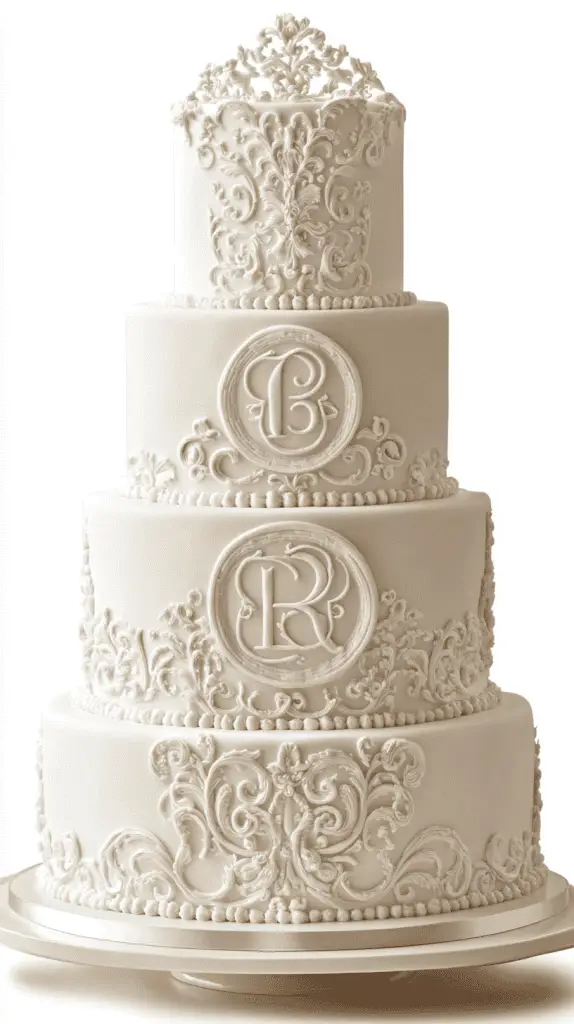
Incorporating royal monograms or emblems personalizes the cake, bringing a sense of identity and history. These design elements can be crafted through meticulous piping or embossed onto the cake’s surface. Such personalization is a time-honored tradition, reflecting the lineage and unity of the couple.
These emblems can be placed strategically across tiers, offering elegance without overcrowding the design.
7. Fruitcake: The Traditional Royal Wedding Flavor
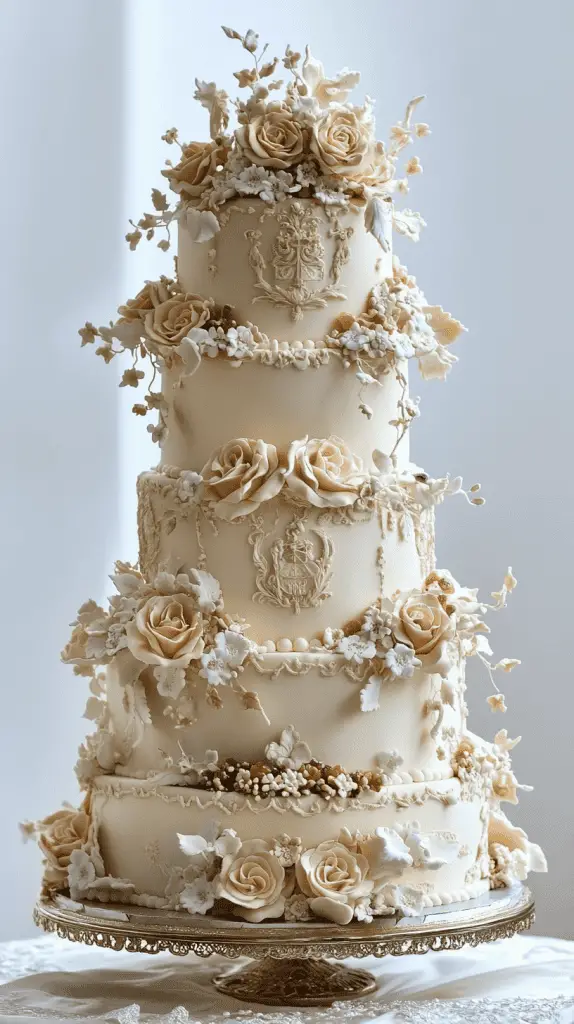
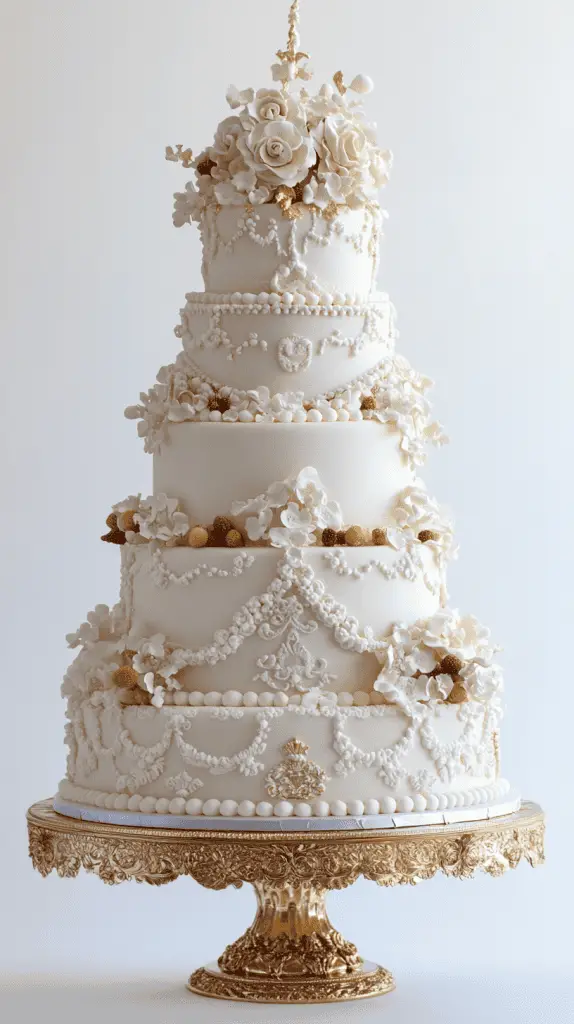
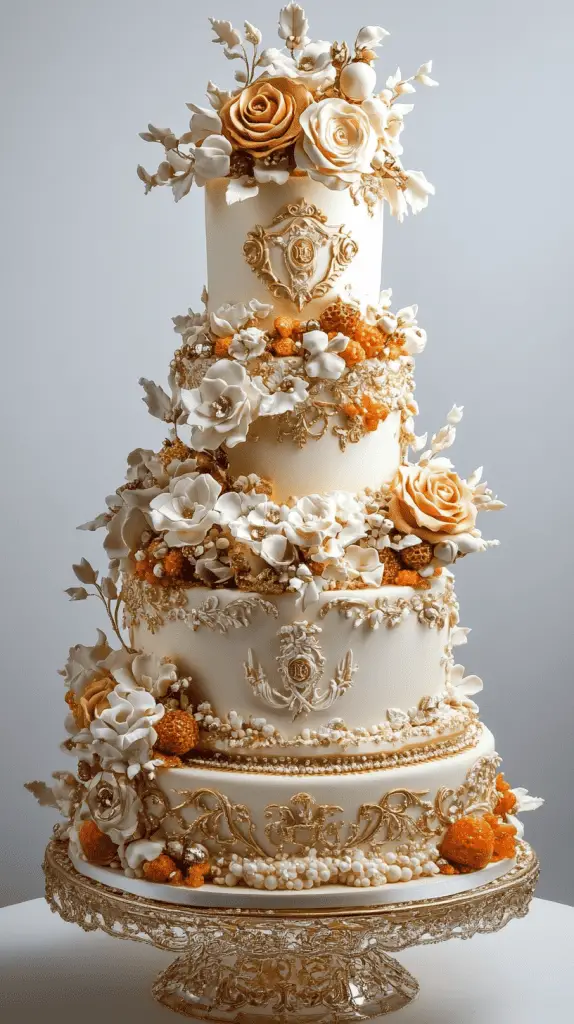
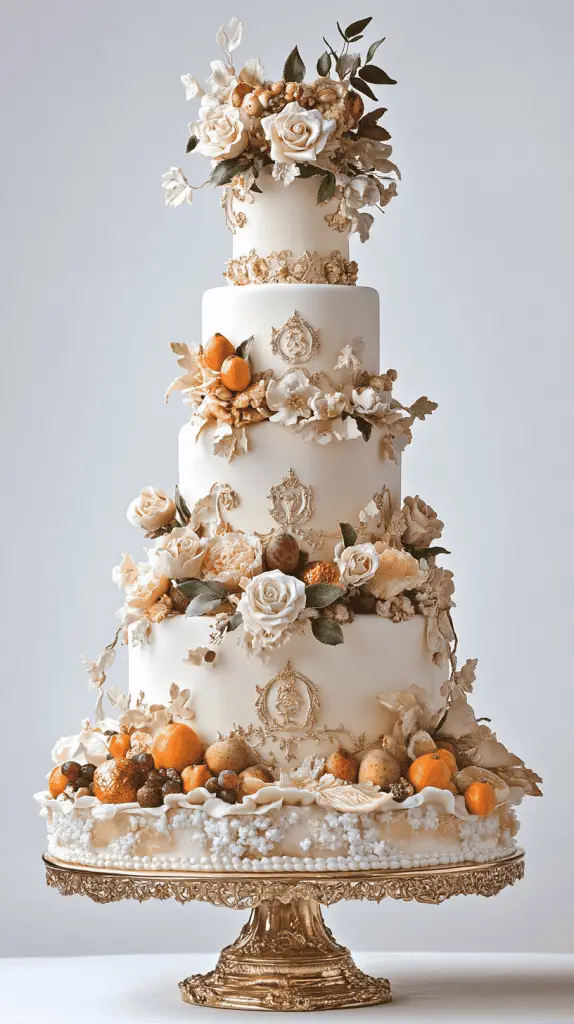
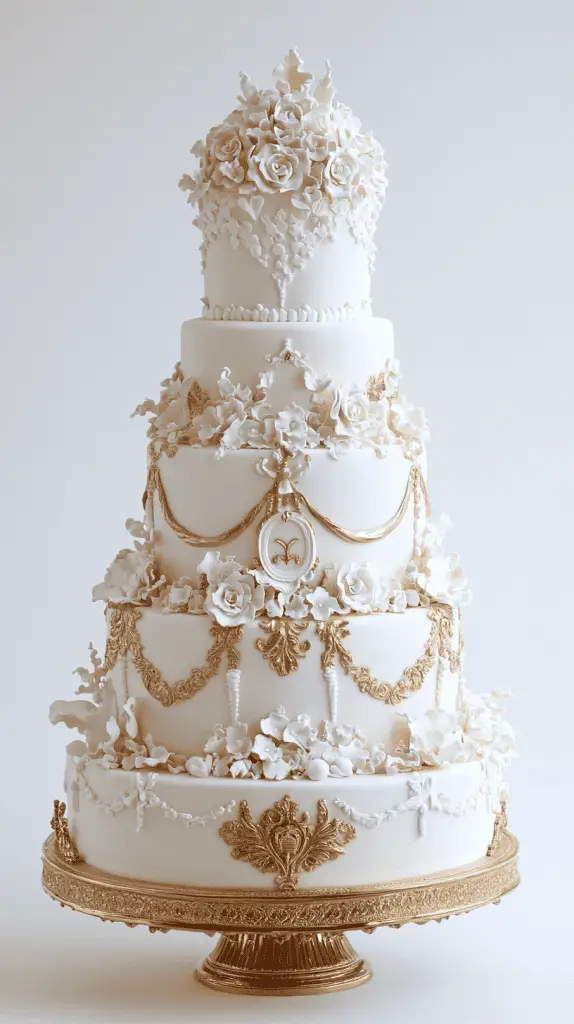
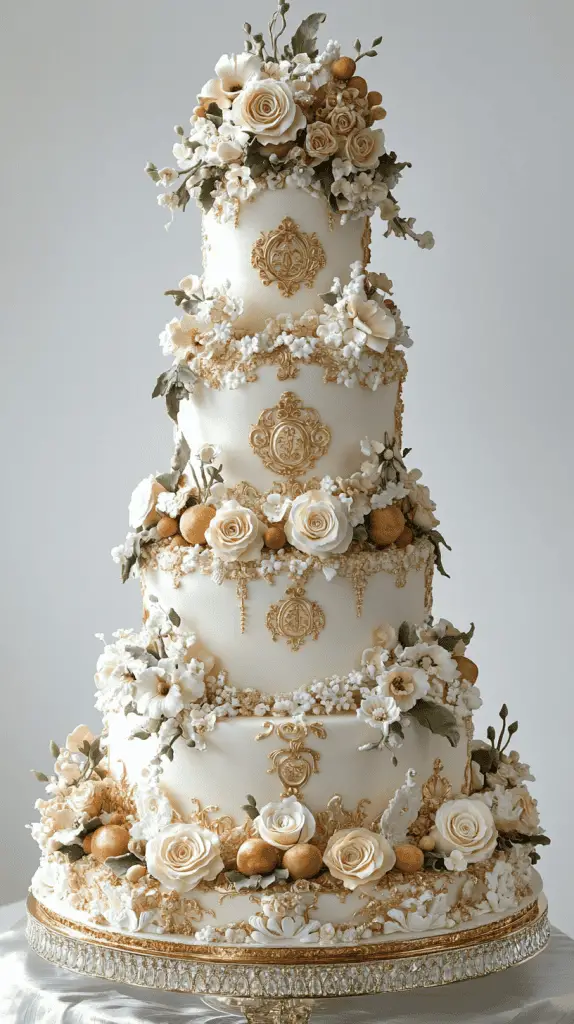
Fruitcake has a longstanding tradition in royal weddings. Its rich, dense texture and mix of fruits and nuts create a flavorful experience. The cake’s long shelf life makes it ideal for royal occasions.
This classic choice carries historical significance, promoting continuity while allowing for creative decoration. While some may seek modern flavors, fruitcake remains a staple in royal weddings.
8. Modern Takes on Royal Wedding Cakes

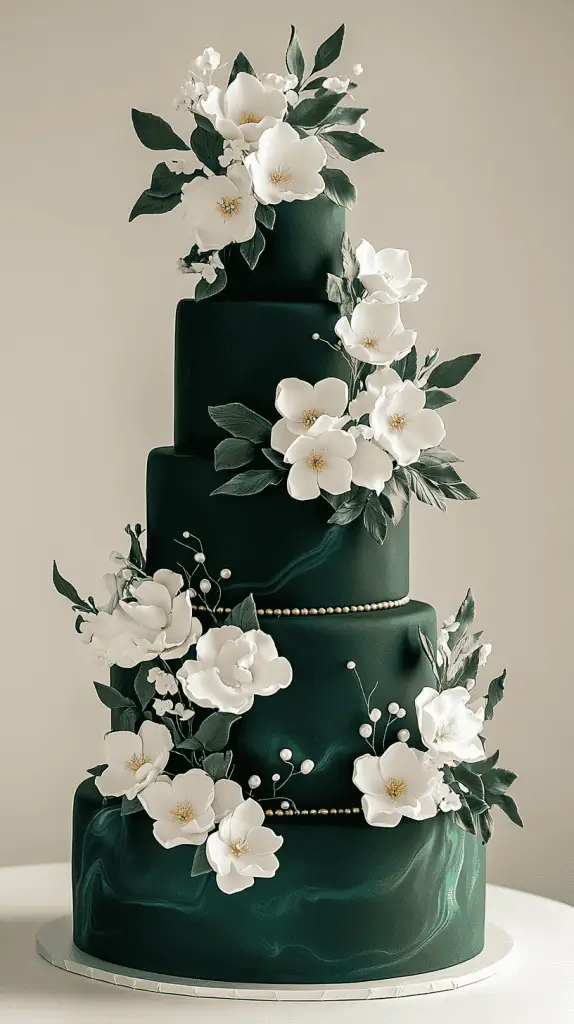




Modern interpretations of royal cakes introduce fresh flavors and innovative designs. While maintaining elegance, these cakes can feature vibrant colors or unique shapes. Elements like marbled fondant or bold hues bring a contemporary flair to the traditional royal cake.
The balance between tradition and individuality is key, ensuring the cake suits the couple’s vision while adhering to royal customs.
9. Tall and Majestic: The Grandeur of Multi-Tiered Cakes
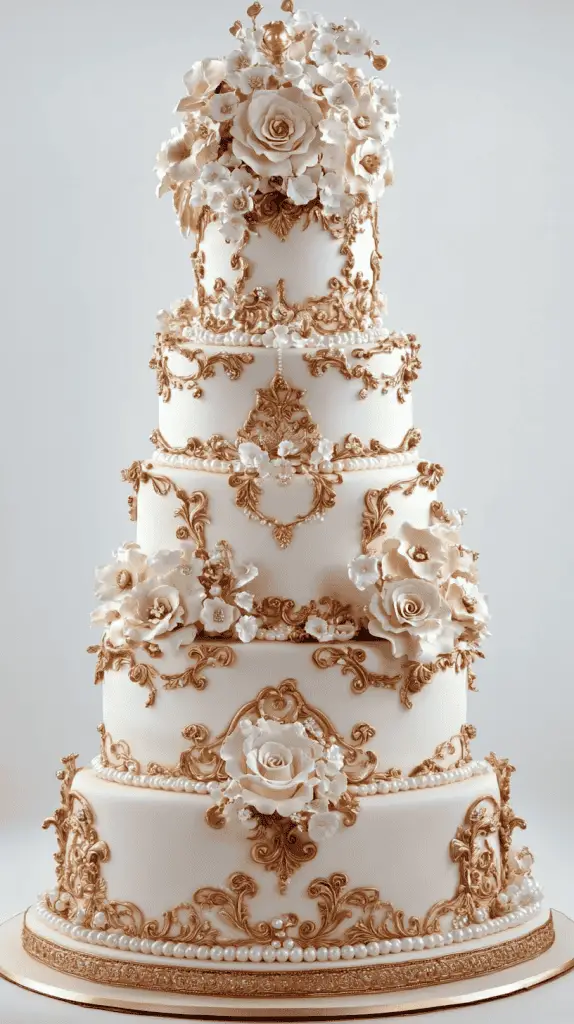
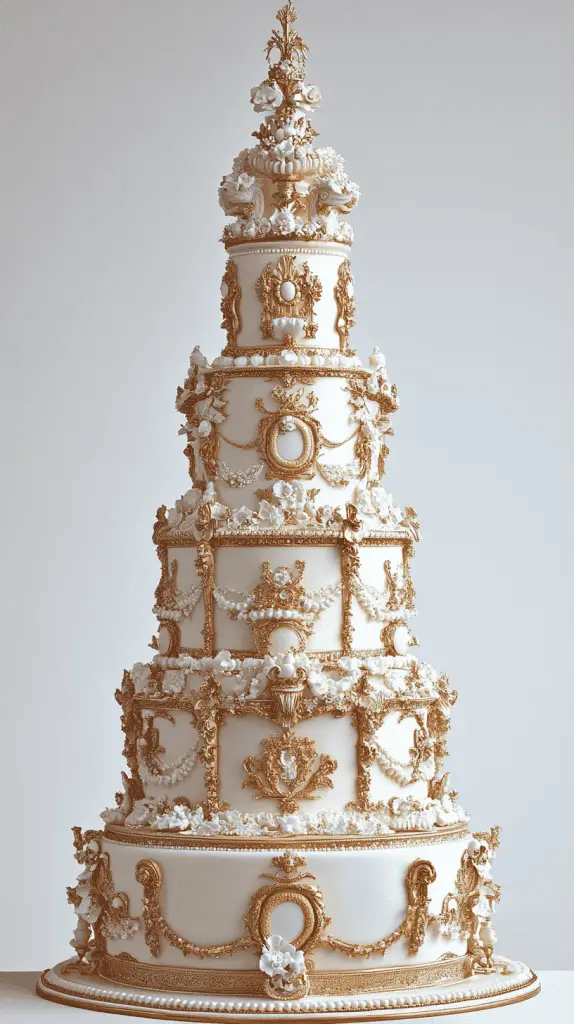
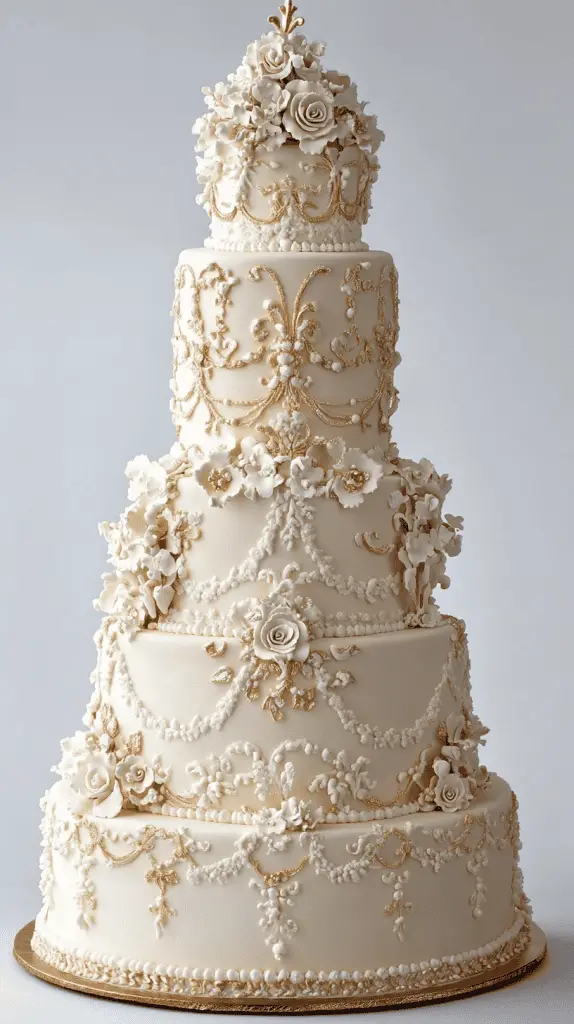

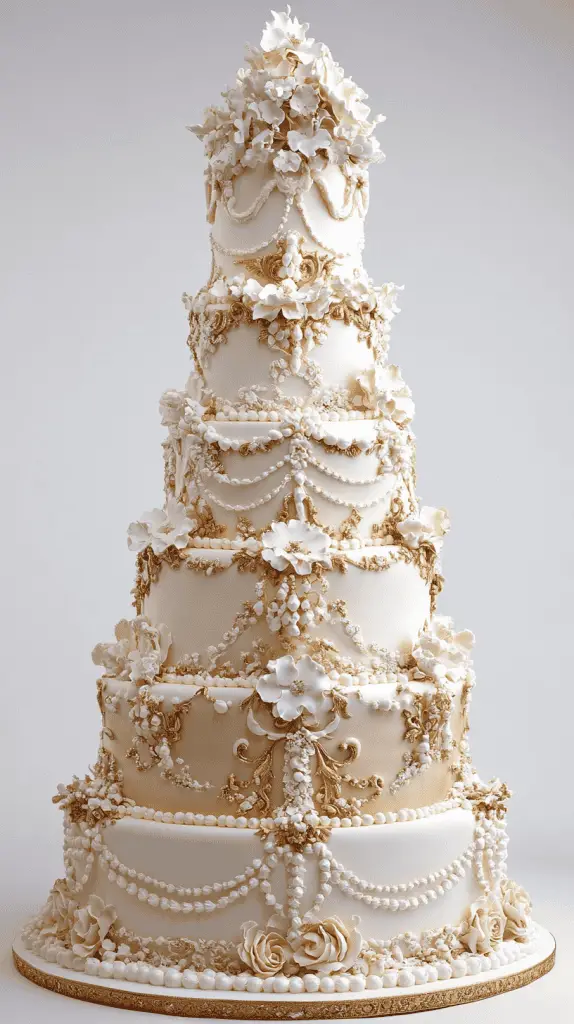
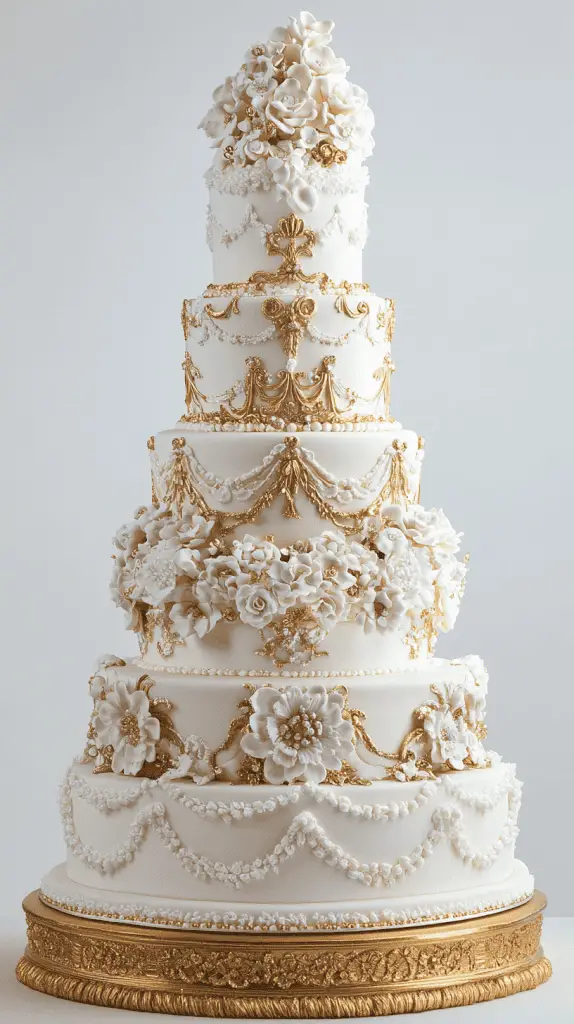
Majestic multi-tiered cakes are a hallmark of royal celebrations. Standing tall, these desserts symbolize grandeur and ambition. Each tier can be a different flavor or design, allowing for creativity within a cohesive theme.
The height and structure signify festivity, making it a striking focal point. The towering nature demands meticulous craftsmanship to maintain elegance and stability.
10. Royal Cake Toppers and Accessories






Toppers and accessories add a unique touch to royal wedding cakes. Beyond crowns, options include symbolic figures or custom-made pieces. These intricate details personalize the cake, highlighting its significance.
Accessories such as edible pearls or ribbons can enhance the overall theme. The careful selection and placement of these elements ensure the cake’s design remains cohesive and polished.

